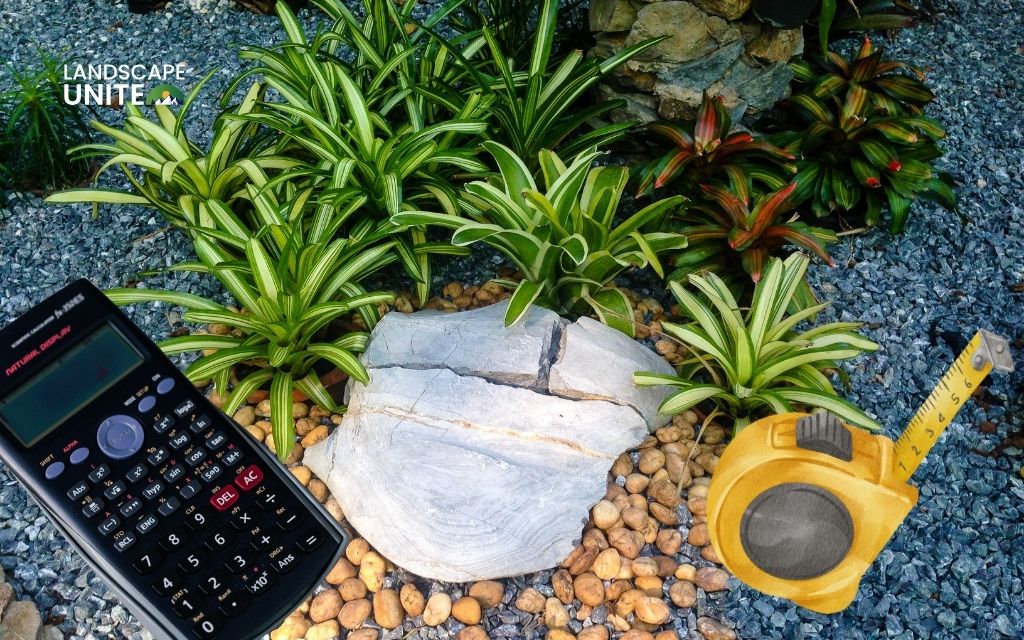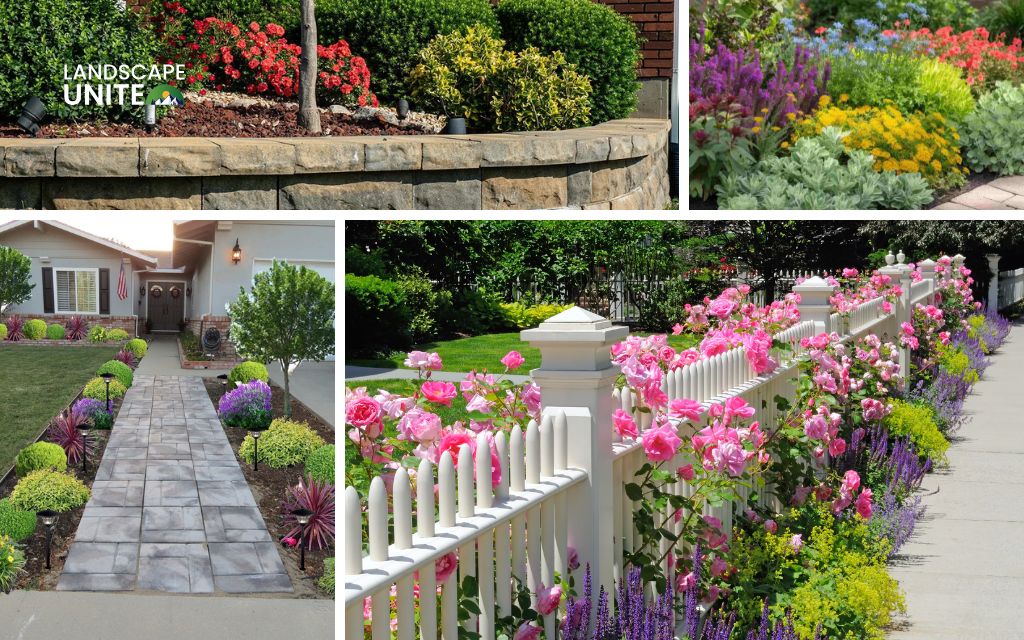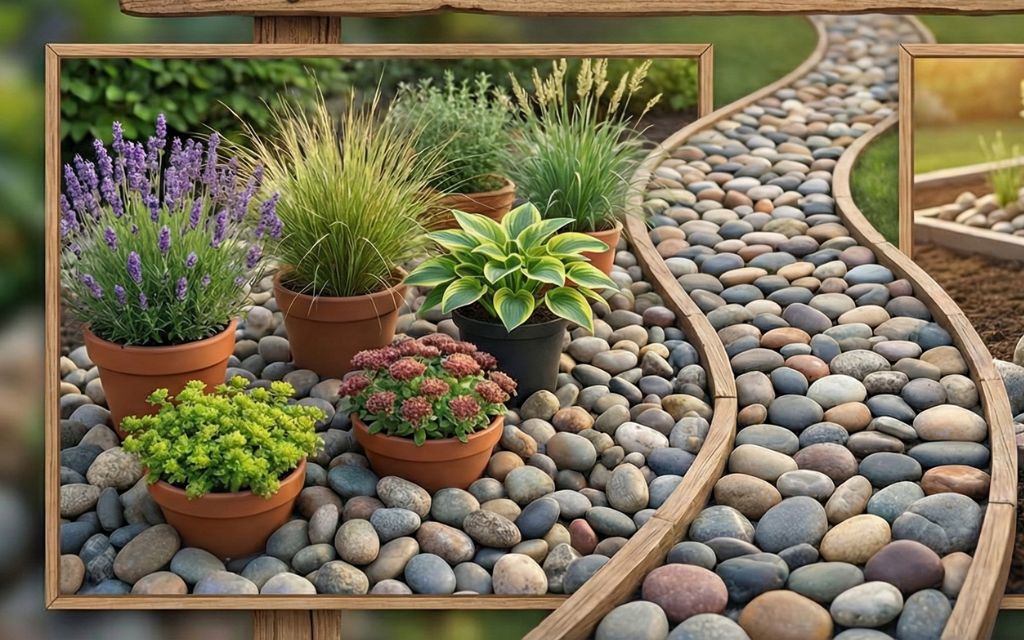Many homeowners use zeroscape vs xeriscape interchangeably, but they’re actually quite different. Understanding the distinction between zeroscape vs xeriscape can save you thousands in water bills.
Xeriscaping uses drought-tolerant plants and water-efficient techniques to create a lush, beautiful landscape while conserving water. Zeroscape, on the other hand, is a minimalist approach with minimal or no plants, relying primarily on hardscaping like gravel and stones.
This difference matters for your water usage, landscape design choices, and long-term maintenance requirements. You’ll learn the proper definitions, see a side-by-side comparison, understand the pros and cons, and discover which approach works best for your Denver property.
Why people mix up zeroscape vs xeriscape
The confusion between these terms isn’t surprising because they sound nearly identical when spoken aloud.
However, their origins and meanings couldn’t be more different.
- Xeriscape derives from the Greek word “xeros,” meaning dry. Coined by Denver Water in 1981, it describes a systematic approach to creating water-efficient landscapes using thoughtful plant selection, soil improvement, and smart irrigation design.
- Zeroscape, conversely, is actually a misconception and mispronunciation of xeriscape. The term suggests a landscape with zero plants and zero care, essentially a gravel lot masquerading as a yard.
Understanding this difference is the first step toward making an informed landscaping decision.
Learn more about the meaning of xeriscape and how it can benefit you.
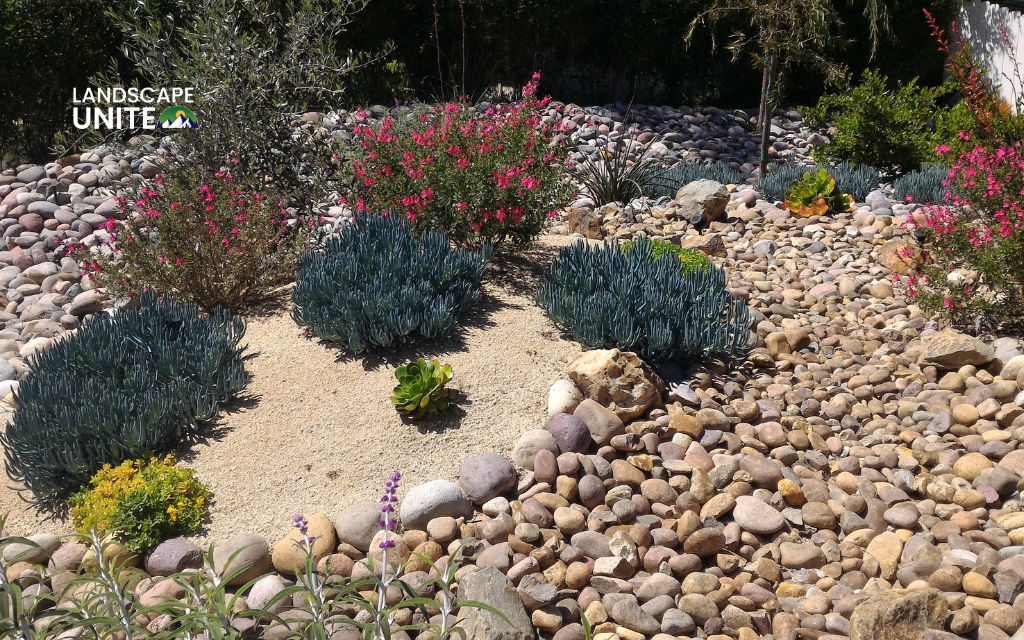
What is xeriscaping?
Xeriscaping represents a comprehensive landscaping philosophy designed to dramatically reduce water consumption while creating visually appealing, ecologically beneficial outdoor spaces.
Rather than eliminating plants, xeriscaping focuses on selecting the right plants for your climate and positioning them strategically.
Effective xeriscaping follows seven fundamental principles:
- Plan and design: Begin with a detailed landscape plan that groups plants by water needs and considers sun exposure, drainage patterns, and foot traffic.
- Select appropriate plants: Choose native and drought-adapted species that thrive naturally in your region without supplemental irrigation once established.
- Improve soil quality: Amend soil with organic matter to enhance water retention and root development, reducing the frequency of watering needed.
- Reduce turf areas: Limit traditional lawn space to functional areas, replacing decorative grass with drought-tolerant groundcovers or mulched beds.
- Apply mulch: Use 2 – 4 inches of organic mulch around plants to minimize evaporation, moderate soil temperature, and suppress weeds.
- Irrigate: Install drip irrigation or soaker hoses that deliver water directly to root zones, eliminating the waste associated with spray systems.
- Maintain: Perform seasonal pruning, monitor irrigation systems, and adjust watering schedules based on rainfall and temperature.
What is zeroscaping?
Zeroscaping takes a minimalist approach to landscaping, often reducing vegetation to near-zero levels in favor of inorganic materials like gravel, crushed rock, or decomposed granite.
While sometimes confused with xeriscaping, zeroscaping represents an entirely different philosophy focused on eliminating maintenance rather than creating sustainable beauty.
Key characteristics of zeroscaping:
- Minimal vegetation: Zeroscapes typically feature few or no plants, occasionally including a single specimen tree or a handful of succulents for visual relief.
- Dominant hardscaping: The landscape consists primarily of rock, gravel, or concrete surfaces with minimal organic elements.
- Limited ecological value: The absence of plants means zeroscapes provide no habitat for pollinators, no food sources for wildlife, and no contribution to local biodiversity.
Soil degradation: Without plant roots and organic matter, soil quality deteriorates over time, making future planting efforts more difficult.
Zeroscape vs xeriscape – What are the differences?
Understanding how these approaches compare across multiple dimensions helps clarify which suits your needs:
| Feature | Xeriscape | Zeroscape |
| Definition | Water-efficient landscaping using strategic plant selection and design | Minimal-to-no vegetation landscape dominated by rock and gravel |
| Plant Diversity | Native and drought-tolerant species in varied arrangements | Few or no plants |
| Visual Appeal | Natural, colorful, and inviting with seasonal interest | Stark, barren appearance often perceived as incomplete |
| Maintenance Level | Low | Minimal |
| Environmental Impact | Supports pollinators, birds, and beneficial insects while preventing erosion | Provides no ecological benefit and may increase runoff |
| Installation Cost | $5 – $15 per square foot | $3 – $10 per square foot |
Pros and cons of xeriscaping
Advantages of xeriscaping
- Water savings: Properly designed xeriscapes use 50-75% less water than conventional turf landscapes, translating to significant annual savings on water bills.
- Reduced maintenance: Once established, xeriscapes eliminate mowing, reduce fertilizer needs, and require watering only during extended drought periods.
- Environmental stewardship: Native plant selections support local pollinator populations, provide food and habitat for birds and beneficial insects, and contribute to regional biodiversity.
- Enhanced property value: Studies indicate water-efficient landscaping can increase home resale value, particularly in drought-prone regions where water conservation matters to buyers.
- Financial incentives: Many municipalities and water districts offer rebates ranging from $1 – $3 per square foot of lawn removed and replaced with xeriscape, offsetting installation costs.
- Climate adaptability: Xeriscaping principles work across diverse climate zones by selecting regionally appropriate plants.
Disadvantages of xeriscaping
- Higher initial investment: Professional xeriscape installation costs $5 – 15 per square foot, compared to $3 – 10 for zeroscaping or $2 – 5 for basic sod installation.
- Design complexity: Selecting appropriate plants, arranging them by water zones, and creating visually cohesive designs requires knowledge or professional assistance.
- Establishment period: Most drought-tolerant plants need 1 – 3 years of supplemental watering before becoming fully established and self-sufficient.able. The reduced watering, weeding, and fertilizing more than compensates for occasional plant care.
Pros and cons of zeroscaping
Advantages of zeroscaping
- Minimal maintenance: Zeroscapes require no routine care beyond occasional weed removal and debris cleanup, ideal for rarely occupied properties.
- Lowest cost: Basic zeroscaping costs $3 – 10 per square foot, making it the most budget-friendly option for immediate water elimination.
- Water reduction: By eliminating nearly all vegetation, zeroscapes can reduce water consumption by 90% or more compared to traditional landscapes.
- Erosion control in specific applications: On certain steep slopes or in desert environments, strategic rock placement can prevent soil erosion where plants struggle to establish.
Quick implementation: Zeroscaping projects complete faster than xeriscaping since they involve fewer plant selections and simpler installation processes.
Disadvantages of zeroscaping
- Poor visual appeal: The barren, rock-dominated appearance often looks unfinished or neglected.
- Heat island effect: Without plant transpiration to cool the air, rock surfaces absorb solar radiation and radiate heat back into the environment, making outdoor areas uncomfortable.
- Zero ecological value: Zeroscapes provide no habitat for pollinators, no food sources for wildlife, and contribute nothing to local ecosystem health.
- Soil degradation: The absence of plant roots and organic matter causes soil to compact, lose structure, and become less capable of absorbing water, potentially increasing runoff.
Weed management challenges: Despite using landscape fabric, weeds inevitably emerge through rock layers, requiring herbicides or manual removal.
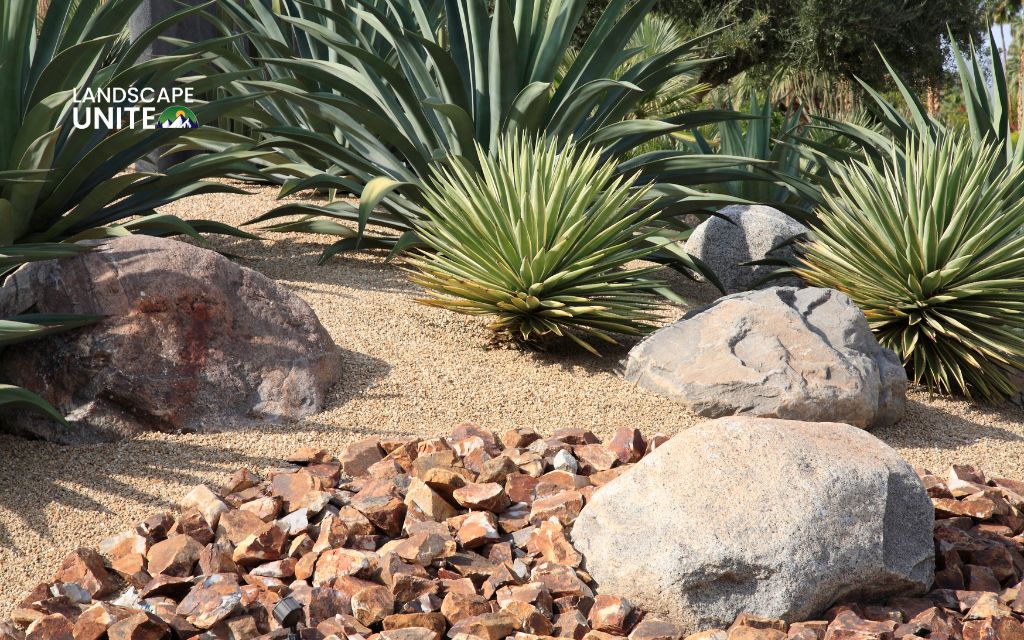
Which Is Better for You?
Choose xeriscaping if you want:
- Long-term water conservation combined with natural beauty and seasonal interest.
- Xeriscaping qualifies for Denver Water rebates and utility incentives, potentially saving you money on installation.
- You’ll support local pollinators and reduce your environmental impact while creating a cooler, more comfortable outdoor space.
- The diverse plantings provide shade and natural temperature regulation.
Choose zeroscape if you need:
- Landscaping small urban strips, utility zones, or back alleyways where plant growth is impractical.
- You prioritize absolute minimal upkeep over aesthetic appeal.
- You prefer a minimalist or contemporary desert-style aesthetic for specific areas of your property.
- Many successful Denver landscapes blend both approaches, using gravel paths and hardscaping combined with xeric planting zones for balance and visual interest.
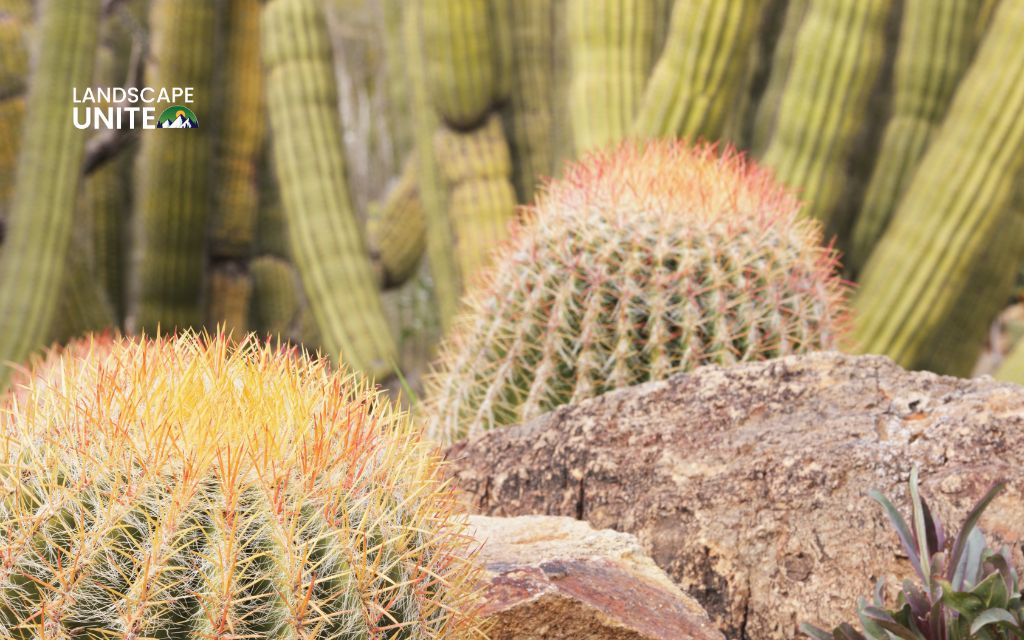
Conclusion
In conclusion, xeriscaping is a smart landscaping approach that uses water-efficient plants and irrigation systems to create beautiful, sustainable gardens. Zeroscaping refers to bare landscapes covered mainly with rocks and gravel, with little to no plants.
For most homeowners seeking to reduce water consumption while maintaining attractive, functional outdoor spaces, xeriscaping represents the superior choice — combining environmental responsibility with lasting beauty and value.
Owning a xeriscape garden isn’t too difficult. Check out this guide on how to xeriscape your garden – you can easily do it at home.
Other guides you might find useful in our xeriscape and garden library:
- How to replace your lawn with a xeriscape yard
- How to create a bee- and butterfly-friendly xeriscape garden
- How to set up an efficient irrigation system in your xeriscape yard
- 10 xeriscape backyard ideas for dog owners
Frequently asked questions (FAQs)
Is zeroscape a word?
The term “zeroscape” is sometimes substituted for xeriscaping due to phonetic similarity, but it’s not an official horticultural term. True xeriscaping follows specific principles developed by landscape professionals.
Which is better for saving water in Colorado?
To effectively save water, xeriscaping is superior because it combines water conservation with ecosystem benefits. Professional xeriscape design can reduce water usage by 50-75% while maintaining property value.
Can I xeriscape part of my lawn and keep grass in other areas?
Yes, you can xeriscape part of your lawn and keep grass in other areas. Many homeowners choose to replace some lawn areas with drought-tolerant plants while retaining grass in high-traffic zones like play areas or entertaining spaces.
Is xeriscaping more expensive than zeroscaping?
Yes, xeriscaping costs more upfront ($5 – 15 per square foot vs $3 – 10 per square foot for zeroscaping). However, xeriscaping adds more property value and provides better long-term benefits.
Does zeroscaping require no maintenance?
No. While maintenance is minimal, you’ll still need to remove weeds and debris occasionally. Landscape fabric can also degrade over time and may need replacement.
Can I mix xeriscape and zeroscape in one yard?
Yes. Many homeowners combine both approaches, using xeriscaping in visible front areas and zeroscaping in back or side yards for a balance of beauty and low maintenance.
